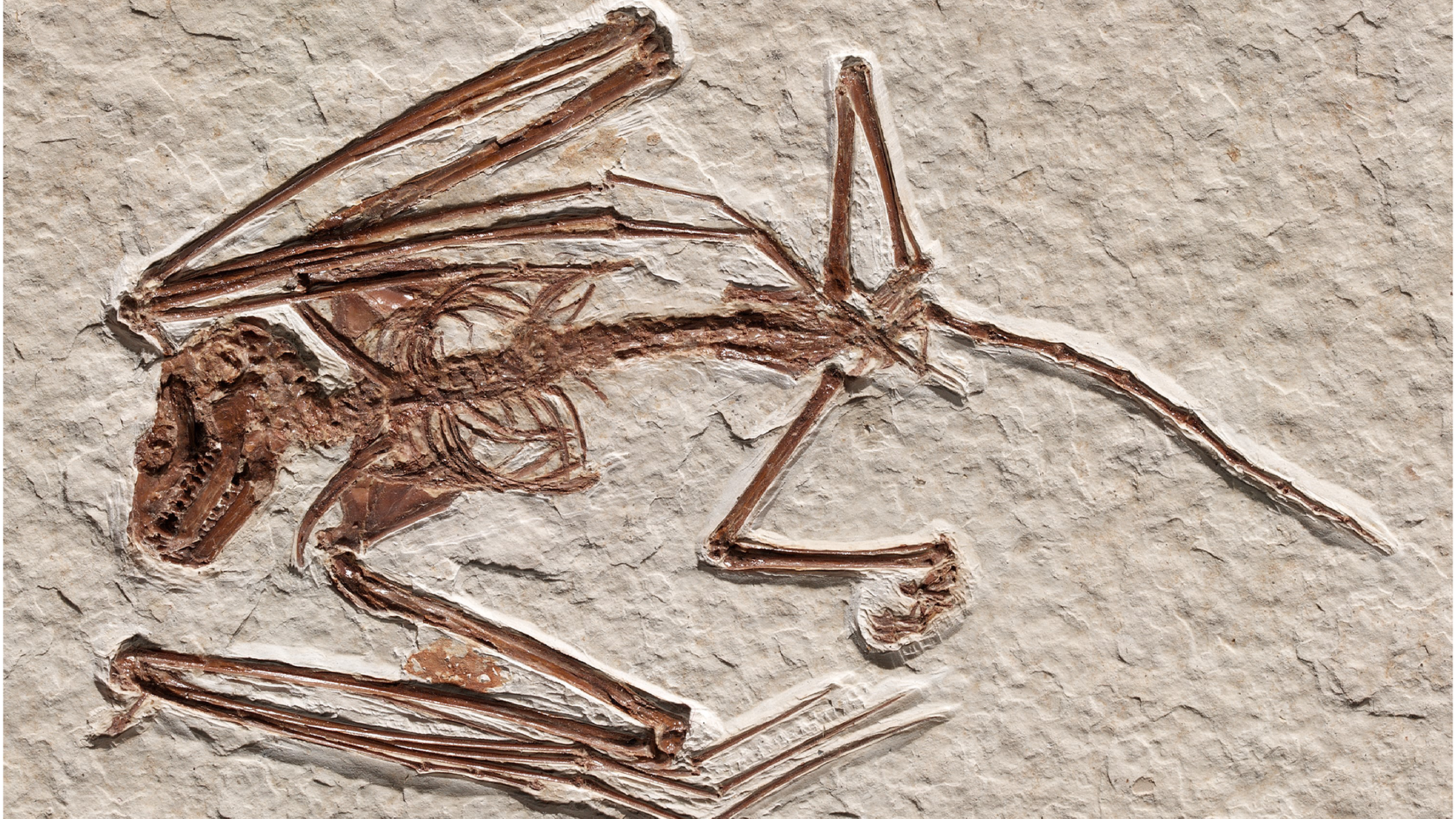52 million-year-old bat skeleton is the oldest ever found and belongs to a never-before-seen species
The bat skeletons unearthed in southwest Wyoming are the oldest ever found, and their discovery has sparked a reshuffle in the bat family tree.
Two stunningly preserved, 52 million-year-old bat skeletons unearthed in Wyoming are the oldest ever found and belong to a never-before-seen species, researchers have revealed.
The rare fossils were discovered in the Green River Formation in the southwest of the state.
The newfound species was slightly smaller than the closest known related bat species, Icaronycteris index, and could easily fit into a human hand with its wings folded against its body.
"When I first saw the first skeleton, I immediately thought it was different," lead author Tim Rietbergen, a bat paleontologist and collection manager at the Naturalis Biodiversity Center in Leiden, The Netherlands, told Live Science in an email. "Because they are found lower in the stratigraphy [sediment layers] compared to other fossil bats, they represent the oldest skeletons."
Bats first evolved during the Eocene epoch (56 million to 36 million years ago). Until now, the oldest bat skeletons on record were the more than 50 million-year-old fossil remains of I. index and another primitive species called Onychonycteris finneyi, which paleontologists both described from Green River Formation deposits. "The Green River Formation is one of the locations where we find the best preserved skeletons," Rietbergen said.
The new finds, which are described in a study published Wednesday (April 12) in the journal PLOS One, have triggered a reshuffle in the classification of early bats to include the newfound species in the family tree.
Related: Bats tell predators to 'buzz off' — literally
Get the world’s most fascinating discoveries delivered straight to your inbox.
To determine the evolutionary history, or phylogeny of the bats, the researchers compared the new fossils with intact skeletons from six Eocene bat species, as well as with isolated teeth from two other extinct species and with skeletons of living bats. Their results indicated that the newly discovered bat skeletons belong to a never-before-seen species of Icaronycteris, which they named I. gunnelli after the late bat biologist Greg Gunnell.
"After comparing the measurements with other bats, it clearly stood out as being a different species," Rietbergen said. "I got super excited, and was wondering, that perhaps the bat diversity from the early Eocene was much higher than we thought."
The scientists also detected a sister relationship with the only other recorded species of Icaronycteris in North America, I. index, which means that they are each other's closest known relatives.
Detailed scans of the fossils suggest that I. gunnelli weighed less than an ounce (22.5 to 28.9 grams), which is about the same body mass as I. index, even though the latter was probably slightly larger. The discrepancy between the reconstructed weight and wingspan could be due to the deformation of bones during fossilization, according to the study.
"This newly described species is considered as one of the oldest known articulated bat skeletons, providing novel insight into the phylogeny of our earliest bat fossils," Emma Teeling, a professor of zoology at University College Dublin in Ireland who did not participate in the research, told Live Science in an email. "However, there are still phylogenetic questions that can only be resolved by recovering more well defined and complete bat fossils."
Based on their analysis, the researchers think that Green River bats evolved independently from other Eocene bats. "There is still a lot that we don't know," Rietbergen said. "Once we have a good view on the bat diversity, we can study evolutionary adaptations and perhaps find hints that will bring us closer to the discovery of the ancestor of bats."

Sascha is a U.K.-based staff writer at Live Science. She holds a bachelor’s degree in biology from the University of Southampton in England and a master’s degree in science communication from Imperial College London. Her work has appeared in The Guardian and the health website Zoe. Besides writing, she enjoys playing tennis, bread-making and browsing second-hand shops for hidden gems.



